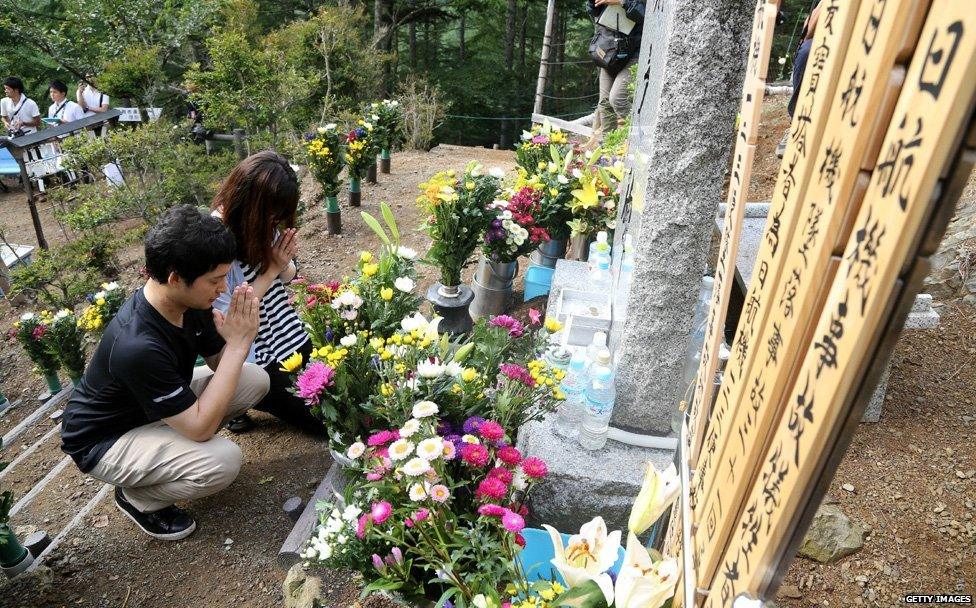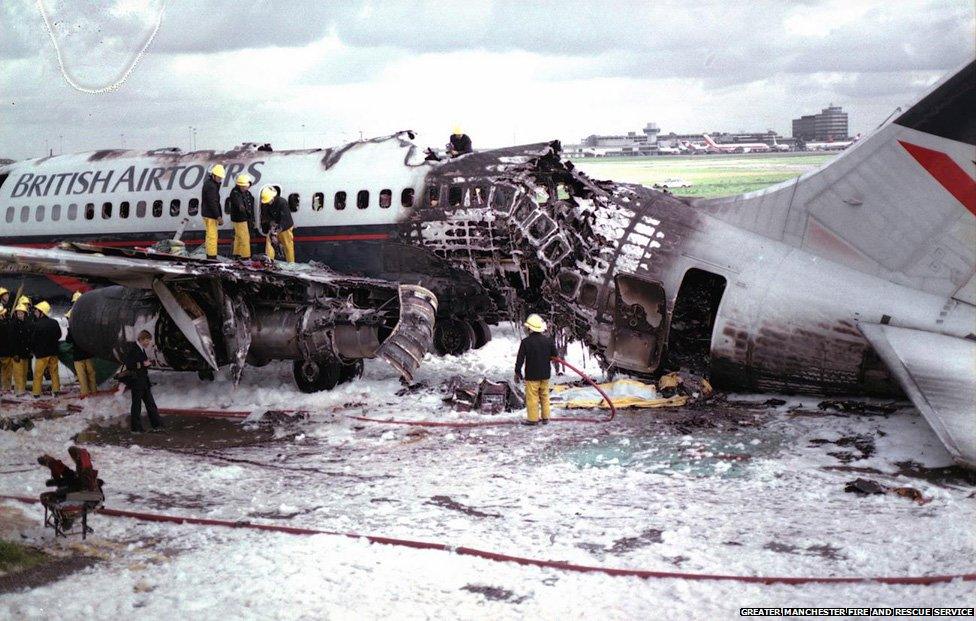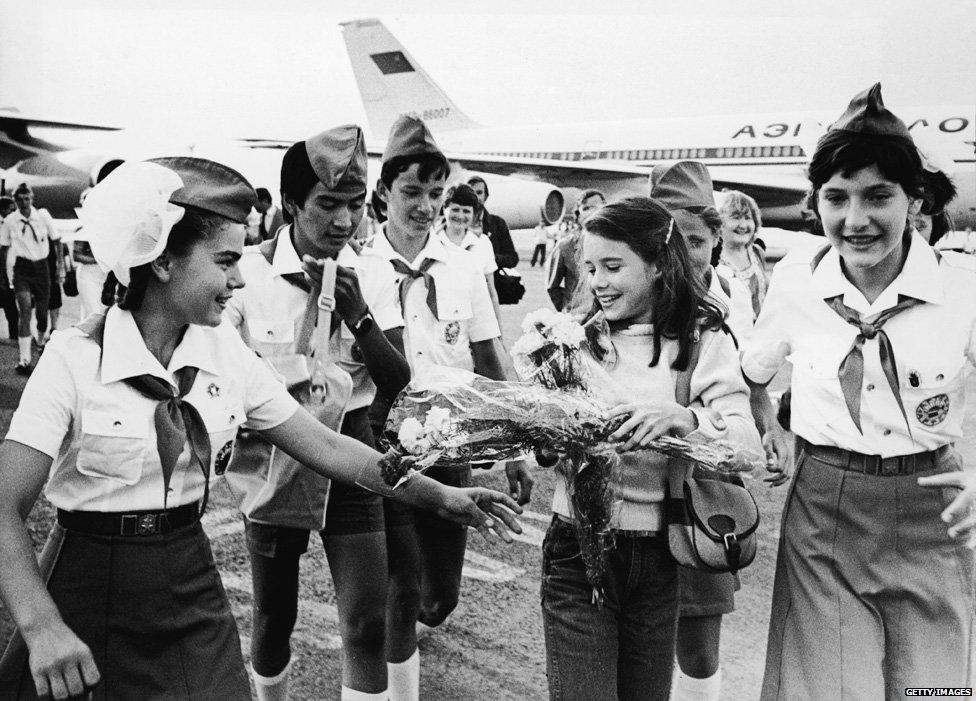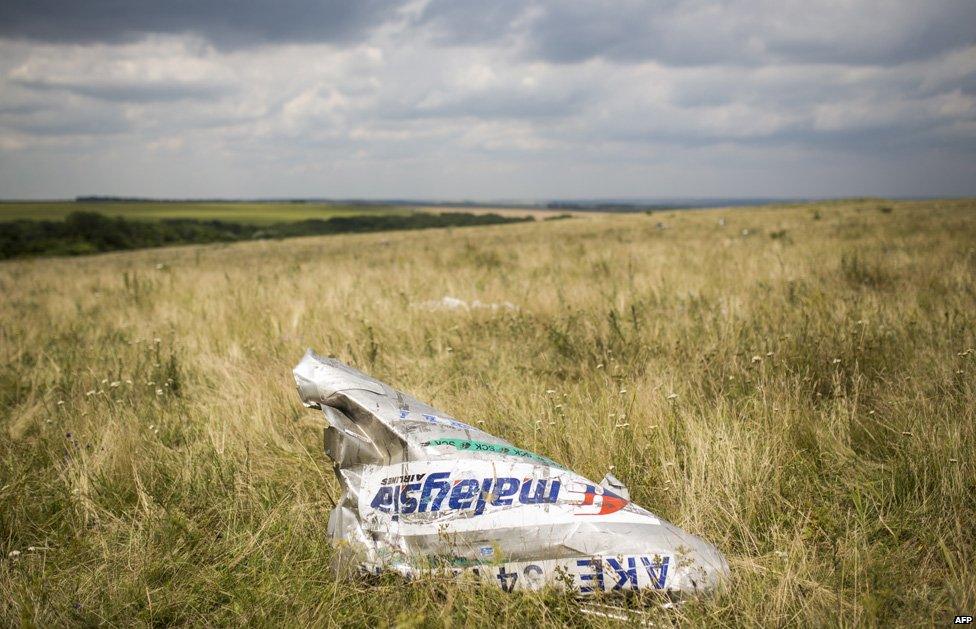August 1985: The worst month for air disasters
- Published

August 1985 witnessed more passenger and crew deaths on commercial airlines than any other month. What made it so deadly and what changed as a result?
There are many grim landmarks in the history of aviation. One in particular stands out.
Three decades ago, 720 travellers and crew lost their lives on board commercial aircraft in a single month - more than in any other before or since.
The deaths occurred in four separate accidents in August 1985. Each disaster had quite different causes. The aircraft involved ranged from a 747 with hundreds on board to a tiny twin engine turboprop carrying just eight people.
There was Japan Air Lines flight 123, the worst single-aircraft accident in history, in which 520 of 524 on board were killed. A further 137 died when Delta flight 191 flew into heavy winds as it approached Dallas-Fort Worth International. A fire on board British Airtours flight 28M at Manchester Airport led to 55 deaths. And all those on board the smallest aircraft, Bar Harbor Airlines flight 1808, lost their lives as it flew into a small airport in Maine, USA.
Each, in their own way, had a lasting legacy, whether in the memories of those left bereaved or in changes in technology and procedure introduced as a direct result.

The worst death toll was on Japan Air Lines Flight 123, a Boeing 747, which was en route from Tokyo to Osaka on 12 August 1985 when the airtight bulkhead between its cabin and tail tore open.
The change in pressure blew off the vertical stabiliser, or tail fin. It also destroyed the hydraulic systems. The plane lurched up and down.
"The crew heroically fought for over half an hour," says Graham Braithwaite, professor of safety and accident investigation at Cranfield University. But by the time the aircraft plunged to 13,500ft they reported that they had lost control.
The 747 began its final descent. "They were over some pretty mountainous terrain," says Braithwaite. Altitude dropped rapidly. A wing then clipped a ridge before the aircraft hit a second ridge, flipped over and came to rest on its back.

It had been 32 minutes since the explosive decompression, enough time for some passengers to write their families farewell notes.
Investigators concluded that the crash was caused by a faulty repair job after the plane's tail struck the runway seven years previously. The damage should have been fixed using a single plate and three rows of rivets. But Boeing engineers used two separate plates, one with two rows of rivets and another with one. Japan Air Lines failed to detect the fault.
For Japan, the crash was deeply traumatic. "The effect was profound," says Braithwaite. Extraordinarily, JAL opened a museum dedicated to the disaster in April 2006. It includes wreckage from the aircraft, letters written by passengers to loved ones and an aviation safety library. All airline staff are obliged to visit it.
There were suggestions that more passengers might potentially have survived if the Japanese authorities had sent rescuers to the crash site sooner, or if they had accepted an offer of help from a nearby United States Air Force base.
And shortly after the disaster JAL maintenance official Hiroo Tominaga killed himself, reportedly leaving a note, external saying: "I am atoning with my death."

But the accident is rare among major air disasters in that it can be attributed to a single and completely avoidable mechanical fault. With the blame lying with the work of the engineers and JAL's inspection procedures, there were no wider consequences for the air industry.
David Learmount, safety editor at Flight Global, says the botched repair "was a massive error that should never have occurred". In terms of technology and procedure "there was no real legacy".
It was quite a different matter with the disaster at Manchester Airport 10 days later. This proved to be a defining event in the history of aviation safety.
As the charter flight to Corfu prepared for take-off, a punctured wing fuel tank caused a huge ball of fire to ignite. The pilots heard a thump and aborted take-off, but did not realise at first that the blaze was under way. They steered the aircraft into a taxiway upwind of the fire, carrying the flames towards the passengers in the fuselage.
Nearly all those who died did so as a result of smoke inhalation: "The survivors were shocked at how quickly it became impossible to breathe," says Braithwaite. Investigators had found the evacuation had been slowed down because the gap between the seats leading to the over-wing exits was too narrow, and the hatch itself was too difficult to remove.

Accounts of a terrifying crash

"Passengers were shouting: 'Fire! fire!' You're having a hundred thoughts. Where's your family? How were they ever going to get out?"
John Beardmore was one of the survivors of the British Airtours flight 28M, which burst into flames on Manchester Airport runway on 22 August 1985, killing 55 people. He recalled the terrifying experience of trying to escape the plane.

As a result, there were a series of changes to commercial aircraft design focused on increasing survivability. The exit row was widened and fire-blocking seat covers, floor lighting, fire-resistant ceiling and wall panels and revised evacuation rules were all introduced.
The routine for pilots in the event of runway emergencies was radically changed - they must now pull up as quickly as possible, taking account of wind direction.
SCISAFE, a campaign group set up by victims' relatives, also campaigned for the introduction of passenger smoke hoods but these have not been adopted.
"There has to be something to justify 55 people losing their lives," says William Beckett, whose 18-year-old daughter Sarah died on the Manchester runway. It was her first time on board an aeroplane. She had chosen to sit at the back because the four survivors of Japan Air Lines Flight 123 had been seated at the rear.
There were also changes introduced as a result of the Delta flight 191 crash in Texas on 2 August. The plane was coming in for landing when it hit a microburst - a small-scale downburst, or column of sinking air.
The aircraft crashed north of the runway and careered along the ground into a highway, killing a driver, before hitting two water tanks and bursting into flames. Of 163 passengers and crew, only 27 survived.
An investigation found that, although the pilot had been experienced, there was a lack of training when it came to dealing with microbursts. The radar on board the aircraft was able to detect thunderstorms but not downbursts of this kind.
"One of the things that was not understood at the time was the structure of a downburst," says Learmount.
"That was understood within a very short period of time. That was coincidence but they very, very quickly developed a windshear warning system for the pilots." The US Federal Aviation Administration soon required all commercial aircraft to install these.
August 1985's final accident came when Bar Harbor Airlines flight 1808 struck short of the runway at Auburn/Lewiston Municipal Airport in Maine, USA, and crashed. All six passengers and two crew members were killed.

American schoolgirl Samantha Smith was invited by Yuri Andropov to visit the USSR in 1983
The crash of a such a small aircraft would not normally have attracted much attention, but one of the passengers was 13-year-old Samantha Smith, who had attracted widespread media attention three years previously when she wrote to Soviet premier Yuri Andropov pleading for peace. She had subsequently made a widely publicised tour of the USSR and acted in an American TV drama.
In the Soviet Union there was speculation of foul play, but an investigation found no evidence of this. It concluded that there had been a ground radar failure and the pilots had been inexperienced fliers on what was a rainy night. Both US President Ronald Reagan and Soviet leader Mikhail Gorbachev sent their condolences.
It was a sad end to a tragic month. But according to Learmount it was far less shocking than it would be today, due to the far greater prevalence of airline accidents in the mid-1980s.
"Aviation was different then," says Learmount. "It's infinitely more sophisticated now. Safety has been absolutely transformed. It would be very difficult for people now to understand what it felt like. Crashes were regular things."
Since the 1990s the number of annual aviation fatalities has been on a downward trend - notwithstanding the spike in 2014, which saw two disasters involving Malaysia Airlines planes - the disappearance of MH370 and the shooting down of flight MH17 over Ukraine - as well as the disappearance of an Air Asia flight to Singapore.
That improved safety record can be attributed, in part, to the changes introduced in the wake of August 1985.

More from the Magazine

Over the course of eight days in the summer of 2014, three passenger planes were lost in mid-flight. A cluster of disasters so close together may seem an unlikely coincidence but is it?

Subscribe to the BBC News Magazine's email newsletter, external to get articles sent to your inbox.